Have you ever rolled into an RV park, unhitched your rig, and thought, “This place feels like a concrete prison with zero soul”? I’ve been there, squinting at a sea of cookie-cutter gravel pads, craving a setup that screams home instead of temporary parking lot.
Standard RV sites often lack personality or protection from the elements, but with a bit of ingenuity, you can turn your permanent spot into a cozy, functional haven.
Here are 10 lesser-known ideas-backed by practical know-how and a touch of charm-to elevate your RV life from bland to grand.
Permanent Canopy with Three-Sided Shelter
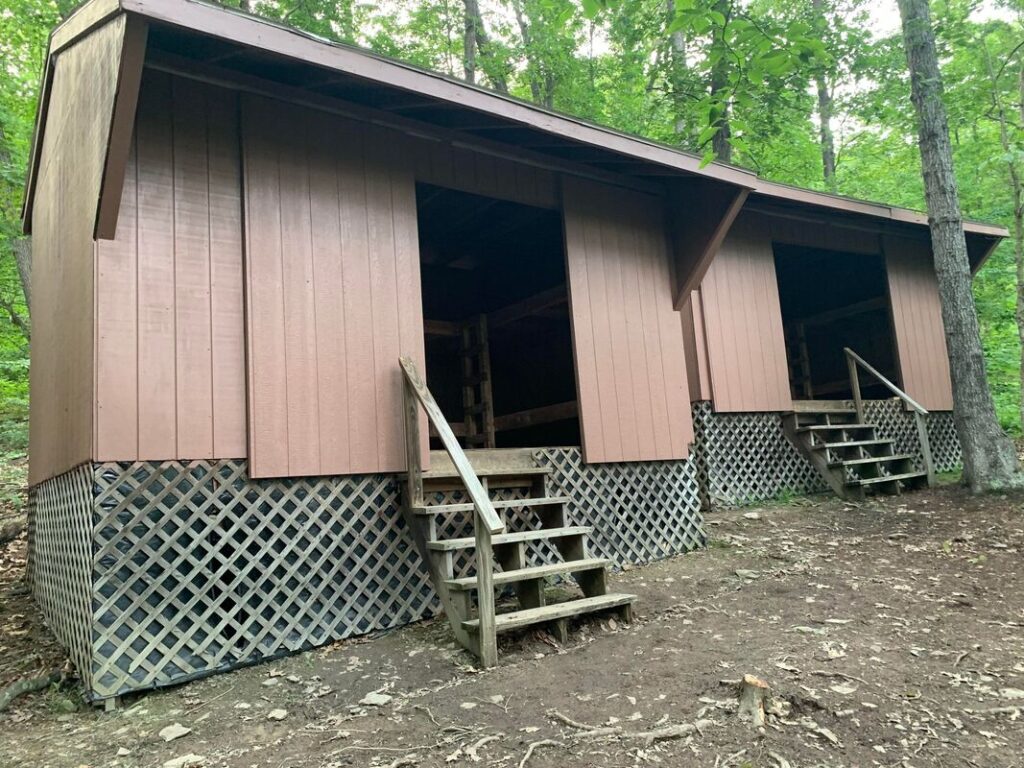
A canopy with three-sided shelter is like giving your RV a hug from the weather gods. It’s not a full enclosure, so you still feel connected to the outdoors, but it’s sturdy enough to fend off sun, rain, or wind.
Think galvanized steel frames with corrugated metal roofing-durable yet lightweight. You’ll want a footprint about 30% larger than your RV to allow for outdoor seating. Anchor it with concrete footings for stability; a 12×20-foot setup can cost around $1,500-$2,000 in materials, per DIY blogs on RV upgrades.
This setup shines across seasons. In summer, it blocks UV rays, keeping your RV’s interior cooler-studies show shaded RVs can stay 10-15°F cooler than exposed ones. In winter, it deflects snow and rain, saving your roof from wear.
For customization, add roll-down mesh screens for bug protection or string up LED fairy lights for a warm glow. I once camped next to a guy who rigged his canopy with solar-powered lanterns, and it felt like a backyard party every night.
Pro tip: paint the frame a bold color like forest green to match your vibe-it’s a small touch that makes the space yours.
DIY Raised Canvas Tent Platform with Outhouse
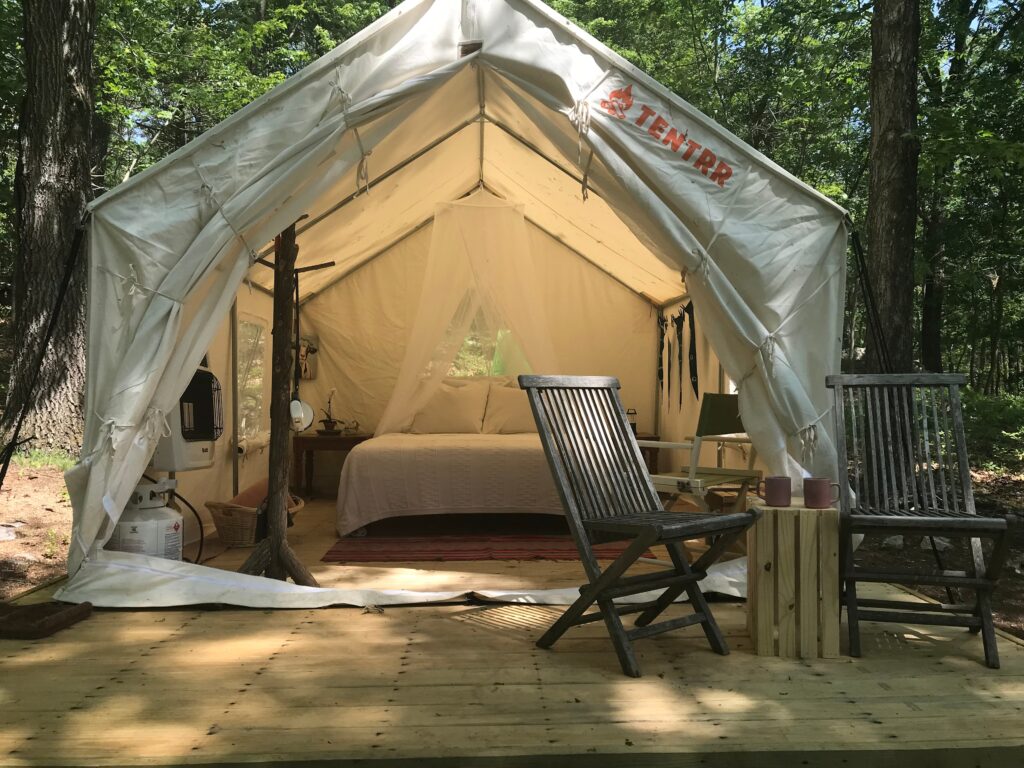
Want to glamp without leaving your RV site? Build a raised canvas tent platform for extra sleeping or lounging space. Start with pressure-treated 4×4 posts and 2×6 planks for a 10×12-foot base, elevated about 18 inches off the ground for drainage.
Secure it with galvanized screws and seal the wood with weatherproof stain-expect to spend $300-$500, based on lumber prices from Home Depot guides. Add a canvas tent on top, like a Kodiak or Bell model, for that rustic-chic vibe.
Integrate off-grid amenities to level up. A solar shower, like those from Advanced Elements, can be hooked to a nearby tree, providing hot water for $150 or less. For an outhouse, a simple 4×4-foot shed with a composting toilet (around $200 online) keeps things eco-friendly.
Maintenance is key-check the platform for rot yearly and re-stain every two years. I helped a buddy build one of these in Oregon, and after a stormy winter, it held up like a champ, letting us sip coffee under the tent while rain pattered around us. It’s like adding a guest house without the mortgage.
Integrating Permanent Bird Feeders Around the RV Site
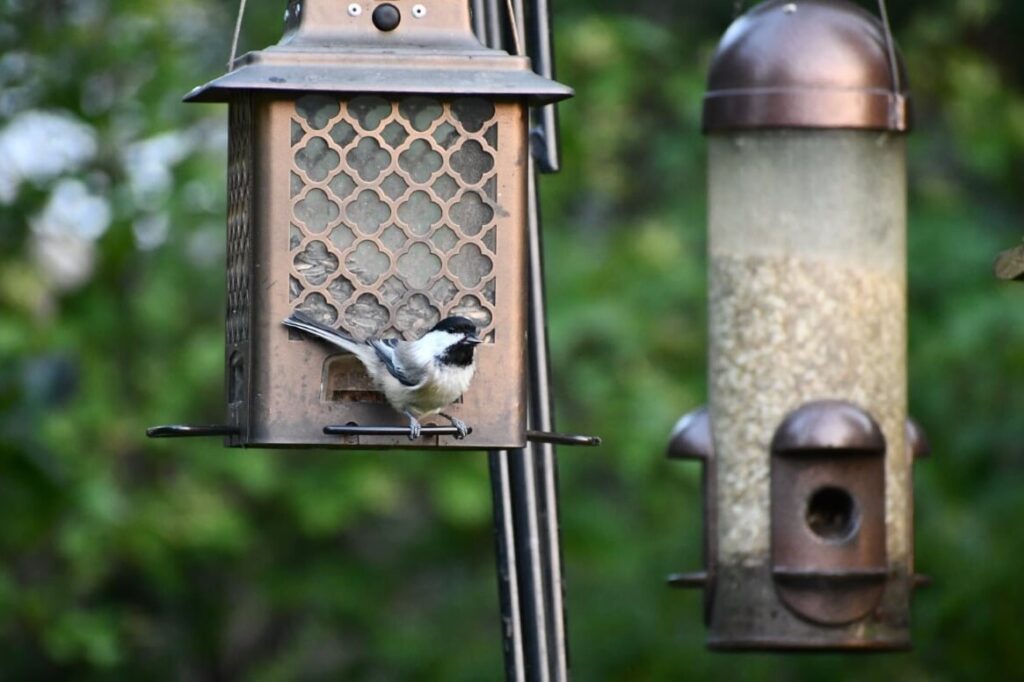
Nothing says “I’m living the good life” like waking up to chirping birds instead of highway noise. Place feeders strategically-post-mounted ones near trees or suction-cup models on your RV’s windows work best.
A 2023 Audubon Society report suggests placing feeders 10-12 feet from windows to avoid collisions. Opt for squirrel-proof designs, like Droll Yankees, costing $40-$80, and fill them with black oil sunflower seeds to attract cardinals and finches.
These feeders turn your site into a wildlife hub, making morning coffee feel like a nature documentary. I once parked in a Tennessee campground where my neighbor’s feeder drew a flock of blue jays daily-it was better than TV.
Go eco-friendly with recycled plastic feeders and avoid pesticide-treated seeds to protect local ecosystems. It’s a small tweak that adds big charm, turning your site into a living, breathing part of the landscape.
Small Permanent Wood Shed for Tools and Firewood
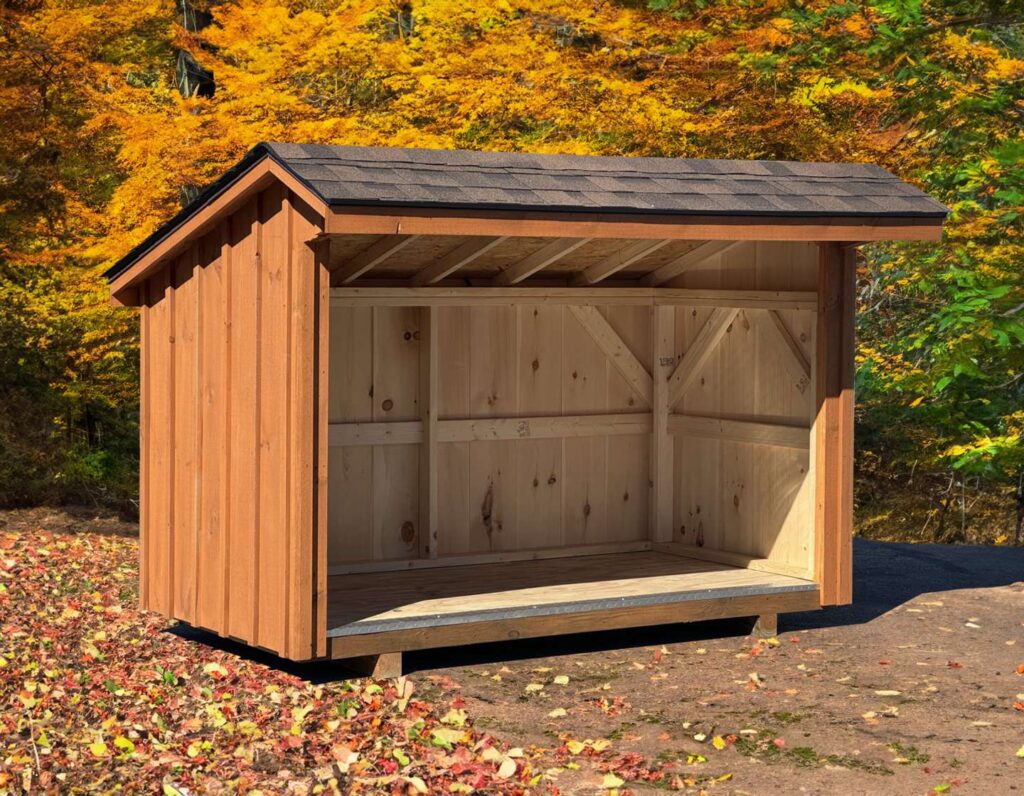
A compact wood shed is a game-changer for keeping your site tidy. A 6×8-foot shed, built with cedar or pressure-treated pine, costs about $600 in materials, per DIY Network estimates.
Weatherproof it with asphalt shingles and seal gaps with caulk to keep tools and firewood dry. Size it to fit essentials-shovels, axes, and a stack of logs-without eating up your lot.
This setup declutters your RV, freeing up storage for things like, say, your secret snack stash. I knew a couple in Arizona who swore their shed saved their marriage-no more tripping over tools in the RV’s tiny living space.
Blend it aesthetically with a coat of earthy paint or stack stones around the base to match the natural vibe. It’s practical but feels like a cozy cabin addition.
Artistic Lighting with Bug-Repellent String Lights
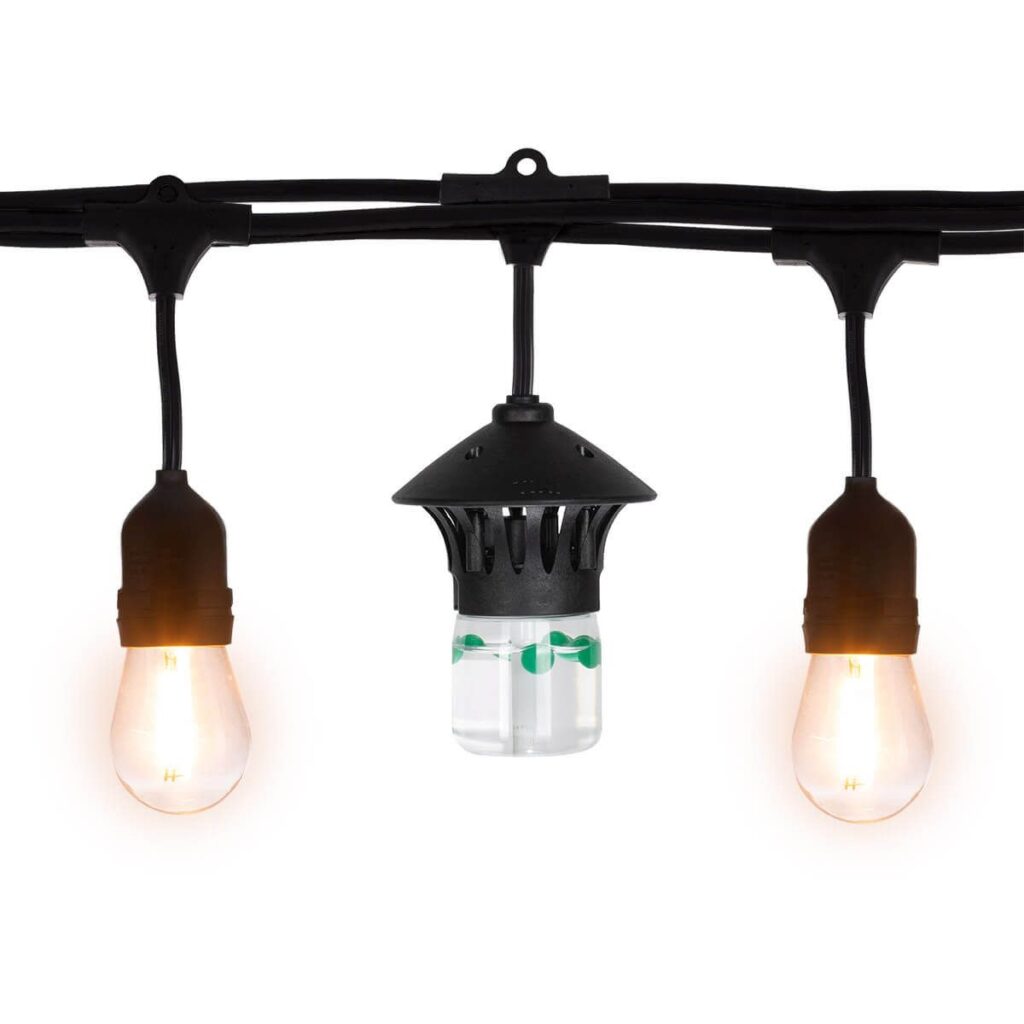
String lights aren’t just for hipster patios-they’re RV site magic. Bug-repellent options, like yellow-tinted LED bulbs from Tiki Brand, cost $20-$50 for a 36-foot strand and reduce mosquito invasions by up to 60%, per Consumer Reports.
Vintage Edison bulbs add retro charm but stick to LEDs for energy efficiency. Mount them on 8-foot poles or clip them to your RV’s awning with weatherproof hooks.
Installation is a breeze-secure poles in concrete-filled buckets for portability. These lights make evenings bug-free and Instagram-worthy.
I strung some up at a Colorado site, and suddenly, my campfire dinners felt like a bistro scene. No more swatting bugs while sipping wine-it’s the little things that make RV life luxurious.
Permanent Natural Privacy Screens with Plants and Fencing
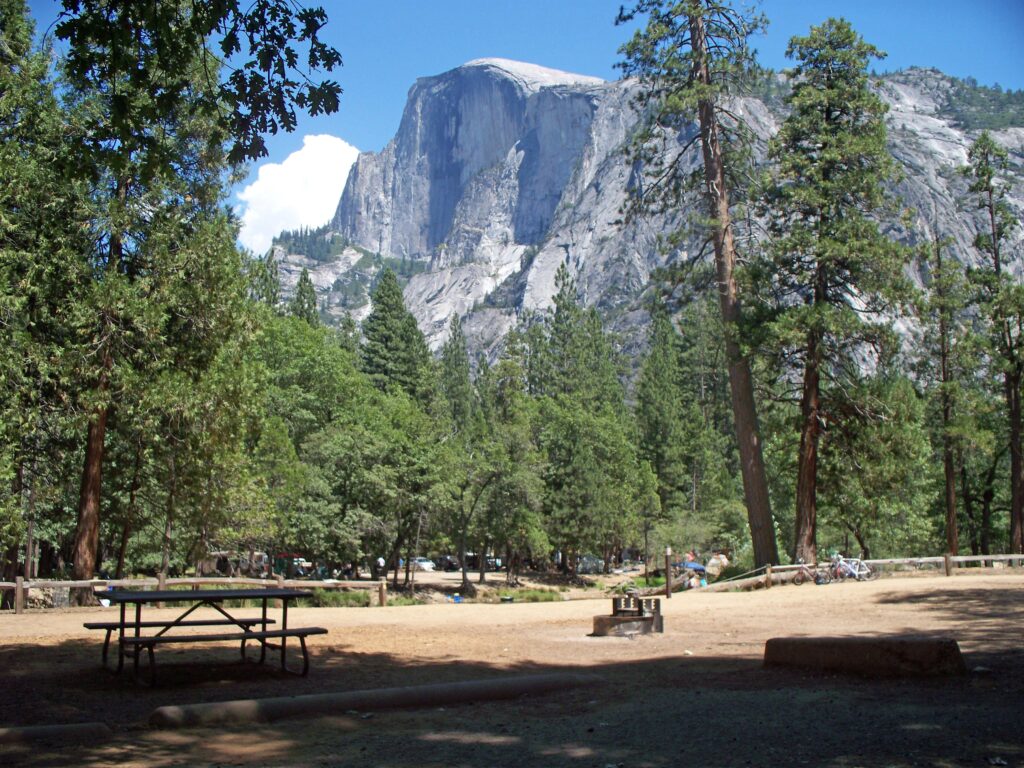
Privacy is gold when your neighbor’s RV is close enough to hear their snores. Plant fast-growing hedges like arborvitae or bamboo-both grow 1-3 feet per year, per Gardening Know How.
Combine with rustic cedar fencing for instant seclusion; a 6-foot panel runs $50-$100. Space plants 3-4 feet apart to allow growth without crowding.
This combo creates a lush, private oasis that looks like it belongs in a nature magazine. I once stayed at a site where bamboo screens blocked the view of a noisy family’s RV-pure bliss.
The greenery softens the fence’s edges, making your spot feel like a secret garden. Plus, it’s low-maintenance if you choose drought-tolerant plants.
Multi-Use Modular Deck Extensions
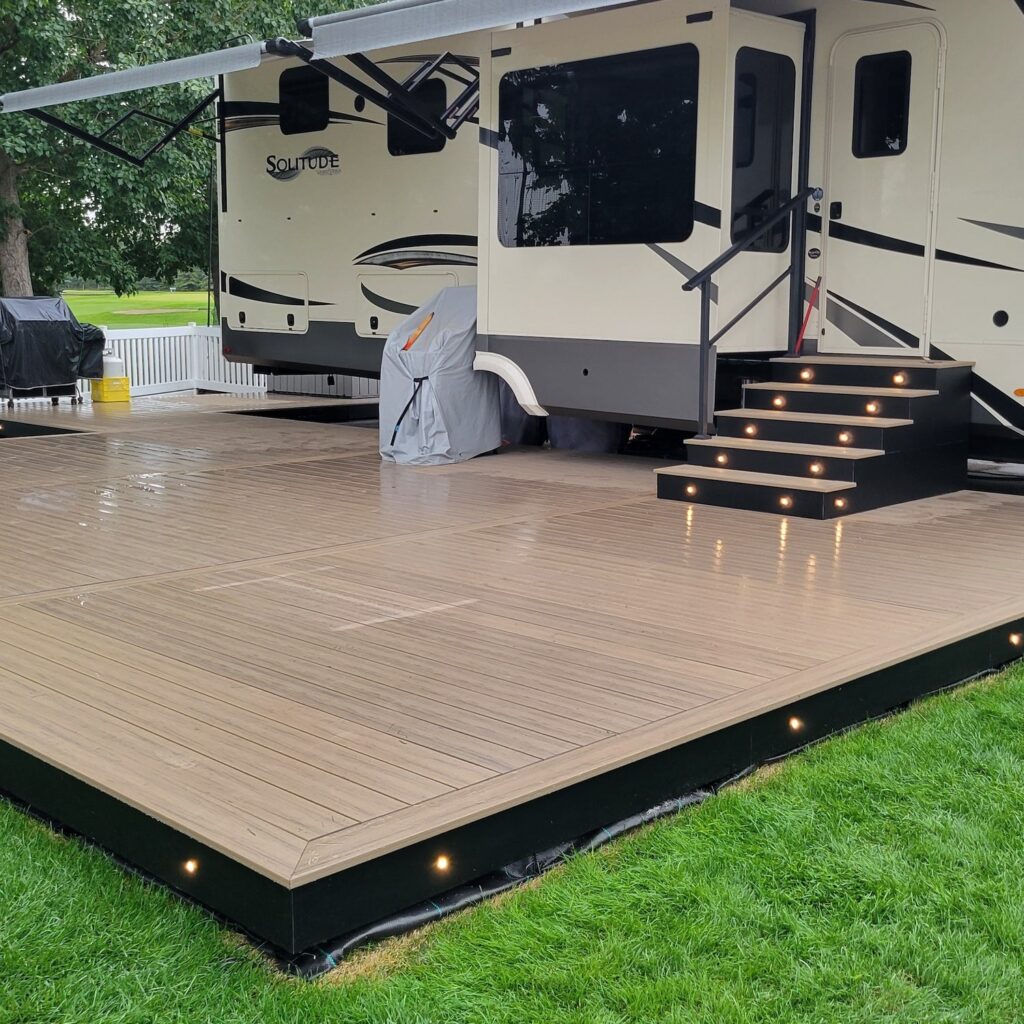
A modular deck is like giving your RV a sprawling front porch. Use pressure-treated 2x4s and decking boards to build 4×4-foot sections that lock together with brackets-$200-$400 for a 12×12-foot setup.
Add foldable benches or tables for flexibility; brands like Lifetime offer weatherproof options under $150. Rearrange for summer BBQs or winter fire pit vibes.
This deck expands your living space, making cramped RV life feel less like a shoebox. I built one for a month-long stay in Utah, and flipping the layout for a stargazing party was a cinch. It’s like having a Swiss Army knife for outdoor living-versatile and endlessly useful.
Fire Pit with Scrap Wood Cookie Table
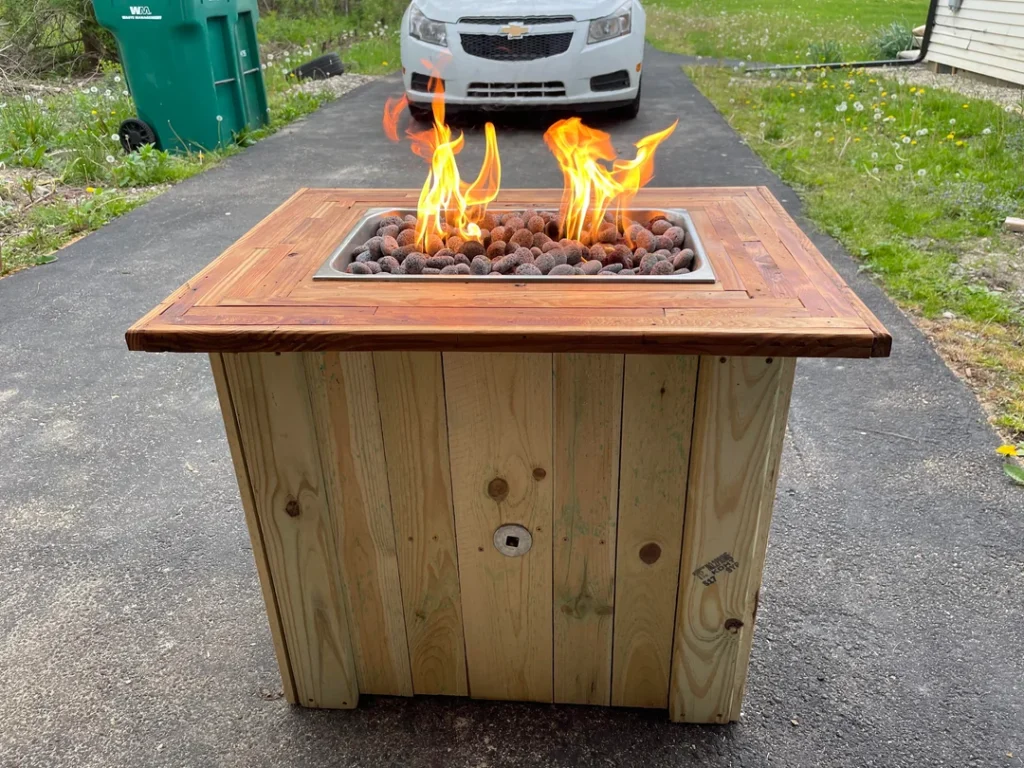
A fire pit is the heart of any RV site, but adding a scrap wood cookie table makes it next-level. Dig a 3-foot-wide pit and line it with fire bricks ($50-$100 in materials).
For the table, slice a fallen log into 2-inch-thick rounds, sand them smooth, and seal with polyurethane-free if you scavenge the wood. Arrange them as prep surfaces around the pit.
This setup elevates campfire meals-think grilled skewers or s’mores stations. I tried this in Montana, and my makeshift table became the go-to spot for chopping veggies and storytelling. It’s rustic, cheap, and makes every night feel like a camping adventure.
Concrete or Gravel Extended Pads with Decorative Stones
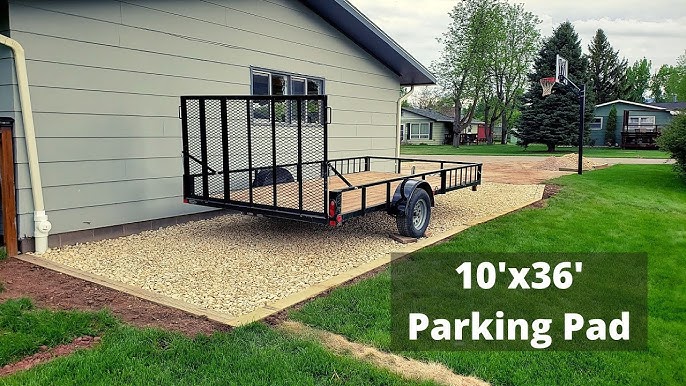
A solid pad keeps your RV level and your site clean. Concrete offers durability but costs $5-$10 per square foot, while gravel is cheaper at $1-$3 per square foot and excels at drainage, per Landscaping Network.
Extend the pad 6-8 feet beyond your RV for a patio vibe. Border with decorative river rocks for a polished look-$50 for a cubic yard.
This setup screams “I’ve got my life together.” I parked on a gravel pad in Nevada, and the extra space made outdoor yoga sessions a breeze. The stones add low-maintenance beauty, so you’re not stuck weeding every weekend.
Heated Pop-Up Gazebo for Cooler Months
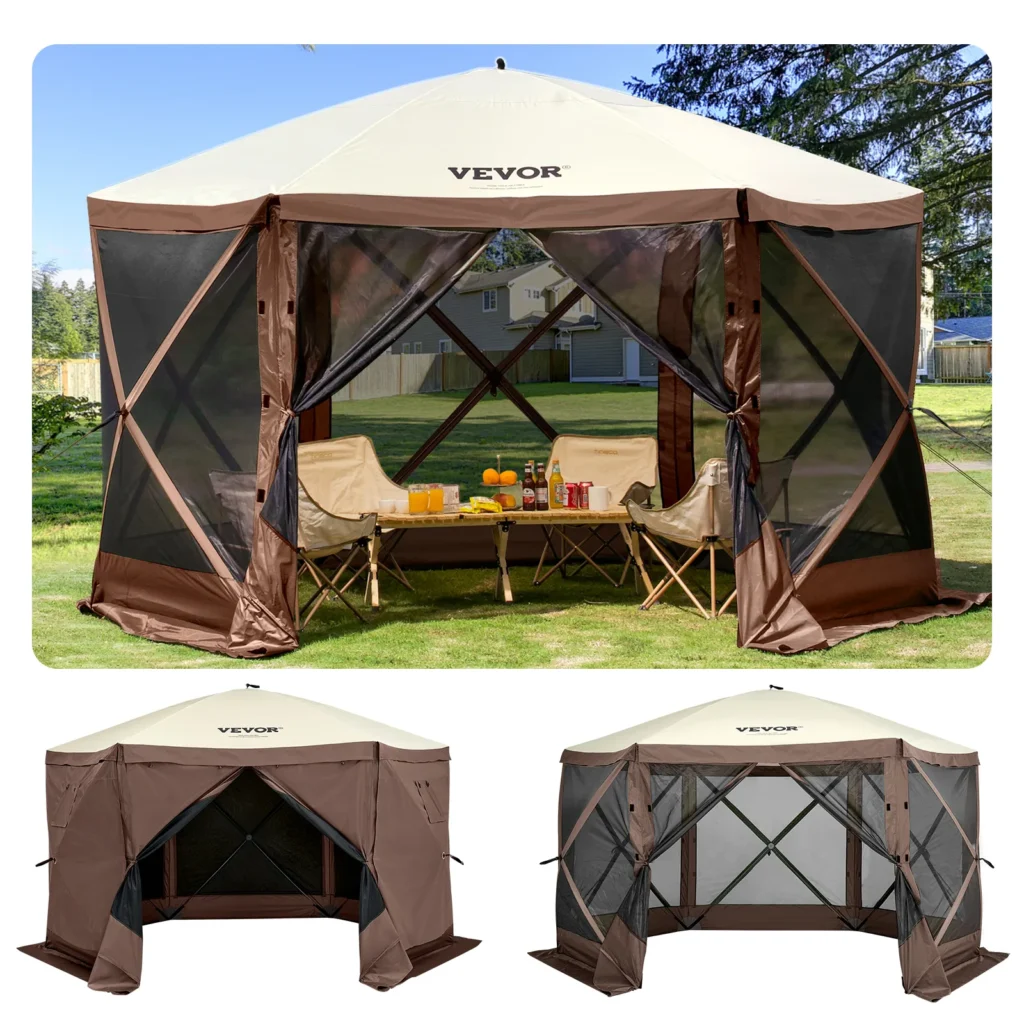
A semi-permanent gazebo extends your outdoor season. Choose a 10×10-foot model with steel frames and waterproof fabric, like those from Abba Patio ($200-$400).
Add a portable propane heater-Mr. Heater models are safe and cost $100-$150. Set it up on your deck or pad with stakes for stability.
This setup keeps you cozy during chilly fall nights, perfect for card games or hot cocoa sessions. I used one in Washington, and it turned a rainy October into a warm, inviting retreat. It’s versatile enough for summer shade, too-just swap the heater for a fan.
In wrapping up, these 10 permanent RV site ideas-from canopies that shield you from the elements to bird feeders that bring nature to your doorstep-blend practicality with personality.
As someone who’s spent years chasing the open road in RVs, I can tell you a modular deck is a great starting point; it’s easy to build and sparks endless creativity.
Your RV site should reflect your adventures, so pick one idea, tweak it to your taste, and make your spot a true home on wheels. What’s your first project going to be?
